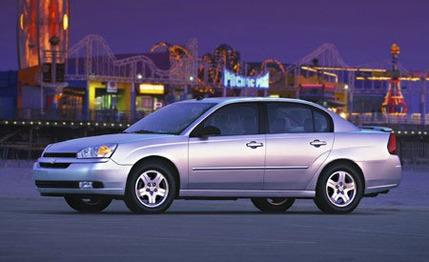
 Road Test
Road Test
Vehicle market share is nothing more than a popularity contest. The hip, cool, athletic, intelligent, or just plain reliable cars and trucks get their dance cards filled first and always go home with the dashing big spenders. Conversely, the average, introverted, milquetoast, or unreliable entrants become showroom wallflowers that eventually find it necessary to bribe people for a date, which always leaves them feeling cheap the morning after (you know, at resale time).
With its cars, Chevrolet has had to resort to such bribery an awful lot lately and so finds itself in need of a major ego and image boost. To that end, the company has thrown its energy into building a buyer magnet, a car filled with all the right stuff to vie for America's affections against the most popular cars in the country-the Honda Accord and the Toyota Camry.
Perhaps surprisingly, the Malibu was chosen for the task, not the larger Impala. Even more surprising is the fact that the new Malibu's overall length shrinks 2.1 inches on a 0.7-inch-shorter wheelbase, making the new car shorter than both its chief foreign rivals. But a half-inch of extra width and a 1.3-inch-taller greenhouse with more upright glass yield an extra cubic foot in both the front and back seats relative to the old Malibu, placing it nearly on top of the Accord and Camry for passenger volume.
Space is well and good, but comfort really draws a crowd, and these seats are well shaped and firmly padded. Up front, there's decent lateral and lumbar support, although the front headrests jut forward a bit too sharply and offer no angle adjustment. The combination of a tilting and telescoping steering wheel and adjustable pedals (standard on LS and LT models) should ensure a perfect fit for every body type. The rear bench may boast the longest and highest rear-seat cushion in recent Chevy history, providing long-haul comfort and great visibility, instead of the showroom illusion of big legroom and headroom that a short, low cushion offers.
The bobbed tail leaves the trunk two cubic feet smaller than the old Malibu's (and the Camry's), but at least the space is almost perfectly rectangular in shape and very accessible. A 60/40-split folding rear seat and a fold-flat front-passenger seat allow the Malibu to swallow long items.
Power is popular, and the Malibu gets a big dose of it by shoving the old 3.1-liter V-6 aside to make room for a 3.5-liter. It's still a pushrod two-valver, but power and torque each jump by 30, to 200 horses and 220 pound-feet. That's within five pound-feet of what the Impala's unboosted 3.8 manages. The only transmission choice is a four-speed automatic, with a quasi-manumatic function. Drop the console-mounted stick from D to L, and then a rocker switch on the left side of the shift knob lets you toggle up and down through gears one through three. Automatic downshifts still happen, but the tranny won't shift up from the selected gear.
At the track, the new car outruns the old one handily, and it even shows its taillights to a Camry V-6, hitting 60 mph in 7.9 seconds and crossing the drag-strip finish line in 16.1 at 88 mph (0.3 second ahead of the Toyota at both points). That's also well ahead of the base Impala, but the Accord V-6 is nearly a second quicker to 60.
Fuel economy is becoming an issue these days, so Chevy managed to crank the EPA numbers up by 3 mpg on both the city and highway cycles to an impressive 23 and 32, besting the Accord (21/30) and Camry (20/28) V-6s. Even under our lead feet the Malibu managed 24 mpg.
As we've all noticed, sometimes in popularity contests, where you come from can be as important as what you can do. So Chevrolet is making no secret of the fact that the Malibu rides atop GM's new Epsilon platform, which was born and raised in Europe to underpin the continental Opel Vectra and sporty Saab 9-3. In our January review of the Saab, we praised the chassis's firm but forgiving ride and precise handling. Making those qualities available in the $19,000-to-$23,000 price range would certainly be popular with us.